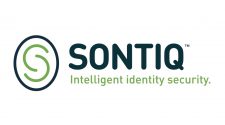Finding ways to save more and increase productivity has always been a core focus for leaders in NFPs, NGOs, charities and social enterprises. In times of unprecedented change, it becomes both more challenging and more important, writes Mathew French from Subscribe-HR.
If you read any of the global reports on workplace and human capital trends throughout the 2010’s, digital transformation was a priority for most leaders. However, reports like KPMG’s annual The Future of HR indicate that in 2019, only 40 per cent of HR leaders said they had a digital work plan in place at the enterprise or HR level.
What that looks like in real terms is lots of organisations, especially those like yours, still using spreadsheets, manual processes or outdated legacy systems to manage the entire employee lifecycle.
You might have been able to get away with managing your employees like that last decade. But if current circumstances have taught us anything, it’s that the adaptability of your organisation (and in some cases its ability to survive) is predicated on your digital dexterity. Essentially, your capacity to pivot quickly in response to rapidly changing economic, social and health conditions is intrinsically tied to how far down the path of digital transformation your organisation has progressed.
When trying to find efficiencies in your business model, it is sometimes true that process re-engineering can help make things more efficient, but not always. Which begs the question – what other opportunities are available to do more (and better) with less, in times of unprecedented change?
Digital transformation: Manual and paper-driven or automated and digitised?
People management involves shuffling a lot of paper if you don’t have systems in place to enable digital management of such paperwork. Let’s be honest, manual handling of paperwork and “crunching the numbers” using spreadsheets generates massive inefficiencies. And yet, there are still many HR professionals relying on such ways of working.
Organisations like NFPs, NGOs, charities and social enterprises can also have additional layers of admin related to their unique people management processes. These range from sector specific compliance and reporting requirements to the distinctive nature of how your workforce interacts with necessary business processes.
Many organisations that run lean, with small teams and tight budgets, often cite time and money as the reasons for not embarking on a digital transformation. You might be surprised to hear that it isn’t always just time and money which are the barriers to making the transition. According to KPMG’s research, a whopping 41 per cent of respondents consider workplace culture to be a top barrier to digital transformation.
The truth is, it really doesn’t have to be that way.
If you’re an HR professional, there are so many ways for you to find efficiencies using #HRtech. Here are just a few examples of all the different touchpoints across the employee lifecycle where you can make the transition from manual, paper-based processes to automated and digitised.
- Requests to hire and authorisation processing.
- Jobs board / vacancy advertising.
- Candidate assessment.
- Candidate auto-scoring.
- Interview scheduling.
- Employment checks.
- Letters of offer.
- Contracts.
- Tax declaration and Super choices forms.
- Induction training.
- Performance management.
- Learning and development.
- Employee and multiple role management.
- Employee engagement.
- Time management.
- Time-off authorisation.
- Change requests.
- Pay grades.
- Remuneration modelling.
- Payroll integration.
- Cost centre management.
- Exit interviews.
- Offboarding.
The benefits of such automation are endless, but often include:
- efficient workflows and processes
- enhanced compliance and reporting
- real-time insights for better decision-making
- accurate and effective records management
- better resource allocation and increased productivity.
Anglicare NT’s human resources advisor Ian Mathers has taken his organisation through a digital transformation of HR. He says: “Subscribe-HR’s Cloud HR Software allows us to save hundreds of administration hours every year through better management of employee information.”
Workforce management: Manual spreadsheets or adaptable HR automation?
It’s fair to say that “workforce shaping” might just end up being HR’s defining challenge of 2020. One that is likely to continue for quite some time. KPMG’s latest Future of HR report certainly reflects this.
Like all business leaders, HR is currently being called on to transform day-to-day operations to enable maximum workforce flexibility, including the capacity to:
- scale back workforce numbers quickly and compassionately
- allow employees to work remotely on reduced hours
- remodel remuneration based on changed conditions
- manage quickly changing compliance requirements
- maintain connections to skilled employees with a history of knowledge and experience to scale back up when the time is right.
In addition to managing such tasks, NFPs et al can have unique structural complexities that are difficult to manage using most HR software. To find the right digital technology that can adapt to the automation of such complexity has historically been difficult and expensive. That’s why NFPs often feel like they have no choice but to struggle with shuffling paper or spreadsheets via email.
The good news is, if you’re an HR leader and you haven’t already started the process of digital transformation in your organisation, there is a massive opportunity for you to lead the way.
Cloud HR software allows HR managers in NFPs, NGOs, charities and social enterprises to leverage technology that has been pre-built to allow for turn-key configuration. That means you can access HR software with the tools you need to easily re-configure settings around key automation, workflows and data capture requirements to suit your needs.
Now more so than ever, businesses like yours can access the support they require, at a price that meets your budget. That means you can say goodbye to spreadsheets and time-consuming, paper-based processes. You can digitise and automate multiple touchpoints across your employee lifecycle, including:
- recruitment
- onboarding
- employee self-service
- performance management
- payroll integration.
You can join other organisations like Anglicare NT, Autism WA, Li-Ve Tasmania, and Fitzroy Basin using #HRtech to fulfil their purpose and drive efficiencies through digital transformation.
This makes manual, paper-based HR admin bottlenecks a thing of the past. The result? You can improve your customer service (both internal and external) and spend more time focused on your chosen cause. And who doesn’t want that?
Looking for inspiration to find other ways to support a flexible workforce and deliver efficiencies in times of change? Every year a selection of well-researched people management reports are published by the likes of KPMG, Edelman, PWC, Deloitte (and more). They cover the changing nature of work and the latest HR statistics, metrics and trends.
At Subscribe-HR, we understand that you don’t always have the time to read multiple 50-plus page reports, even if they’re full of great intel that you need to know about. That’s why we’ve done the hard work for you and summarised the highlights from most relevant reports for HR professionals during the last 12 months. To access your free white paper, simply click the link below:
https://www.subscribe-hr.com.au/hr-metrics-statistics-and-trends-white-paper-nfps-ngos-charities-2020
About Subscribe-HR
Established in 2010, Subscribe-HR is the leading provider of Cloud HR Software to not-for-profit organisations. Used by NFPs like: Anglicare NT, Autism WA, Li-Ve Tasmania and Black Dog Institute, Subscribe-HR provides efficiencies and cost savings through better management of employee information and processes across areas like: e-Recruitment, Employee Onboarding, Core-HR, Self-Service, Team Dashboards, Performance Management, Surveys and Payroll integration.
For more information visit: https://www.subscribe-hr.com.au/

















Commentary: Should breaking news alter your investment strategy? | Business Columnists